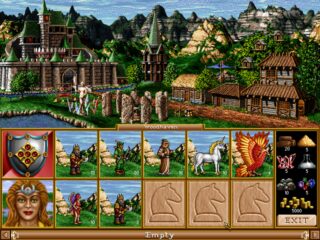Legendary Game Designers: Jon Van Caneghem
Creator of Might and Magic, Heroes of Might and Magic, and King’s Bounty
![]() By: Maddie
By: Maddie
Published: 6 June 2025, 8:02 pm
Jon Van Caneghem stands as one of the most influential yet underappreciated figures in computer role-playing game history. From his humble beginnings as a pre-med student obsessed with games to becoming the mastermind behind two of the most enduring fantasy franchises in gaming, Van Caneghem's career represents the last gasp of the bedroom programmer era and the birth of modern CRPG design philosophy.

Early Life and Gaming Obsession
Van Caneghem grew up in the privileged circles of 1970s Hollywood as the stepson of a prominent neurologist. His parents harbored high ambitions for their son, enrolling him at the elite bilingual Lycée Français de Los Angeles. However, young Jon never quite fit the mold his parents had cast for him. A slow reader and reluctant student, he found his true passion not in academics but in games of all kinds - beginning with checkers and chess, progressing through Risk and Diplomacy, then to Avalon Hill's complex wargames, and ultimately discovering the world of Dungeons & Dragons.
When Van Caneghem entered UCLA in 1979 as a pre-med student, he was fulfilling his parents' dreams rather than his own. The academic path held little appeal compared to his twin obsessions: playing games and the dangerous thrill of racing cars on the legendary Mulholland Drive. It was during his middle years at university that a friend introduced him to the Apple II computer, changing the trajectory of his life forever.
Discovery of Computer Gaming and the Programming Journey
The Apple II revelation came at a perfect time. As Van Caneghem's friends began finding jobs and romantic relationships, traditional game nights became increasingly difficult to organize. The computer offered something revolutionary - the ability to play sophisticated games whenever he wanted, without depending on others' schedules. He immediately purchased an Apple II and, like countless others, fell into a deep addiction to Wizardry, completing the game an estimated seven to eight times.
It was the limitations and flaws in these early CRPGs that sparked Van Caneghem's transition from player to creator. Friends grew tired of his constant complaints about game design and challenged him with a simple question: "Why don't you make your own?" His response was honest - he had no programming knowledge whatsoever. This obstacle led to a pivotal decision: abandoning his pre-med studies to switch to mathematics and computer science at UCLA.
The transition wasn't easy. University computer science courses focused on outdated mainframe systems with punch cards, offering nothing relevant to personal computer development. Van Caneghem had to teach himself everything about Apple II programming, absorbing every magazine and piece of technical documentation he could find. His programming education was entirely self-directed, driven by an obsession with creating the perfect CRPG.
The Birth of Might and Magic
After graduating from UCLA in 1983 with his new degree, Van Caneghem dropped a bombshell on his parents: he wanted to create and sell his own computer game. Reluctantly, they agreed to support him for a couple more years while he pursued this seemingly quixotic dream.
What followed was an epic three-year development marathon that Van Caneghem still describes as the most satisfying creative experience of his life. Working almost entirely alone, he designed and programmed every aspect of what would become Might and Magic: Book One - The Secret of the Inner Sanctum (or simply Might and Magic). He handled 90% of the work himself, bringing in external artists only for specific graphics tasks and outsourcing some writing to his wife.
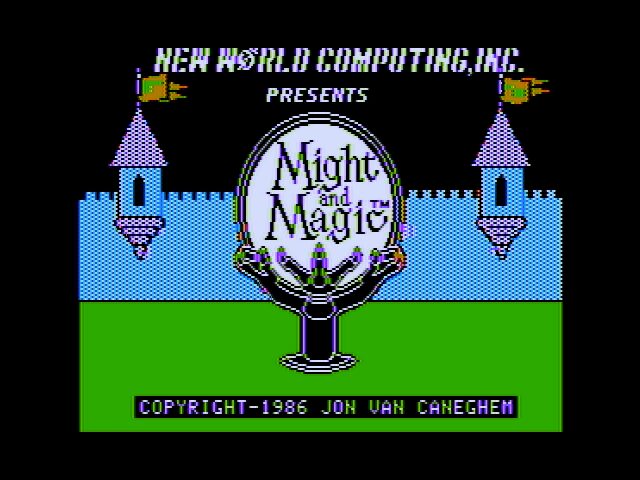
The technical approach Van Caneghem took was revolutionary for its time. Unlike many programmer-designers who started with a clever graphics routine and built a game around it, Van Caneghem approached development as a designer first and programmer second. This holistic philosophy would become the defining characteristic of all his future work. He wasn't interested in showing off technical prowess; he wanted to create the ultimate gaming experience.
The first Might and Magic was programmed entirely in 6502 assembly language for the Apple II, utilizing every byte of the machine's limited memory. Van Caneghem developed sophisticated data compression techniques to pack enormous amounts of content into the Apple II's 48K of RAM. The game featured 250 different items, 94 spells, 200 monster types, and 55 individual 16x16 square areas to explore - an unprecedented amount of content for a computer game of that era.
The Self-Publishing Gamble
When Van Caneghem began shopping his completed game to publishers in 1986, he found significant interest. CRPGs were experiencing a boom period, with Ultima IV and The Bard's Tale having been major hits the previous year. However, the financial terms offered by publishers were disappointing - typically around $1 per copy sold on games retailing for $35 or more.
Rather than accept these terms, Van Caneghem made the bold decision to self-publish. Being a devoted Star Trek fan, he chose "New World Computing" as his company name, inspired by the show's mission "to explore strange new worlds and new civilizations." He invested heavily in professional presentation, commissioning artwork for an attractive box and a detailed cloth map of the game world.
Most crucially, Van Caneghem understood that presentation was everything in the software market. Instead of the typical quarter-page black-and-white advertisements used by most bedroom programmers, he convinced his parents to fund a professionally designed, full-page, full-color advertisement in Computer Gaming World and A+ magazine. This advertisement looked as polished as anything from major publishers and couldn't help but get noticed.
Activision Partnership and Early Success
The gamble paid off spectacularly. Orders poured in so fast that Van Caneghem's bedroom phone line rang constantly, turning him into a sleep-deprived zombie as he personally handled every sale. Relief came from an unexpected source: Jim Levy, CEO of Activision, called to propose a partnership through their new "affiliated-label program."
This partnership allowed New World Computing to maintain creative control and prominent branding while gaining access to Activision's distribution network and porting resources. Ironically, Levy was fired from Activision shortly after making this deal, but the partnership remained in place. Might and Magic reached store shelves in early 1987, accompanied by a glowing review from Computer Gaming World's respected columnist Scorpia, who praised its "scope and complexity."
Ports to IBM PC and Commodore 64 followed quickly, with the latter handled by a young John Romero, who would later co-create Doom. While Might and Magic never quite reached the commercial heights of Ultima or The Bard's Tale, it established itself as the leading game in the second tier of CRPGs, more than sufficient to launch Van Caneghem's career.
Evolution of the Might and Magic Series
Published in December 1988, Might and Magic II: Gates to Another World represented a significant evolution of the formula. Van Caneghem had assembled a proper development team in Van Nuys, California, hiring artists and programmers who shared his gaming passion. The office culture reflected this priority - work ended at 5:30 PM, and gaming sessions continued late into the night.
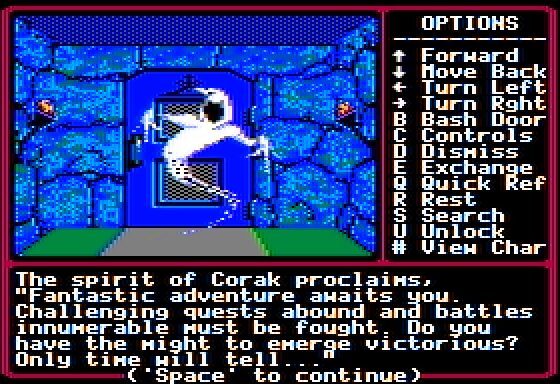
The second game showcased Van Caneghem's commitment to incremental but meaningful innovation. It featured 60 discrete areas compared to the original's 55, but more importantly introduced quality-of-life improvements that would become genre standards. The optional auto-mapping system eliminated the need for hand-drawn maps, while the "disposition" system allowed players to adjust random encounter frequency based on their current goals.
Strangely, Might and Magic III: Isles of Terra didn't arrive until 1991, delayed by Van Caneghem's well-intentioned but financially disastrous venture into board game publishing. When it finally appeared, it represented a dramatic technological leap forward. Designed for MS-DOS systems rather than the aging Apple II, it featured 256-color VGA graphics, full mouse support, and most importantly, the ability to save anywhere rather than only at specific inns. The game was also released for Amiga in 1992 and Macintosh in 1993. There were also console versions like the SEGA CD one, and the SNES version released in 1995.
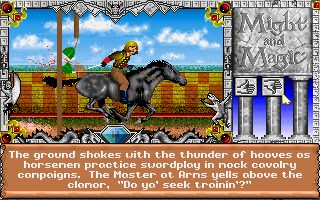
This save-anywhere feature alone cut average completion time in half, despite the game containing 64 individual areas. The improved presentation came at the cost of some old-fashioned charm, leading some veterans to complain about over-polish, but newcomers embraced the more accessible design.
The Xeen Experiment and Genre Innovation
The twin games Might and Magic: Clouds of Xeen (1992) and Might and Magic: Darkside of Xeen (1993) represented Van Caneghem's most ambitious technical experiment. When installed together, they combined into World of Xeen, a single massive game encompassing 201 discrete areas. This concept of expandable, interconnected game worlds would later influence numerous other developers.
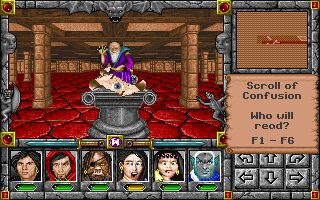
World of Xeen also introduced several innovations that became CRPG standards. It featured one of the first automatic quest logs, eliminating the need for hand-written notes, and included a global difficulty setting. Van Caneghem's wife suggested the "Adventurer" mode, which reduced combat difficulty for players more interested in exploration and story than tactical combat. This feature demonstrated Van Caneghem's early recognition that RPGs needed to appeal to broader audiences beyond hardcore number-crunchers.
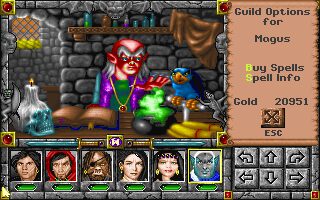
Unlike the previous chapters, Clouds of Xeen and Darkside of Xeen were released on PC only.
Technical Philosophy and Design Innovation
Throughout the Might and Magic series, Van Caneghem maintained his philosophy of "generous" game design. Where contemporary CRPGs like Wizardry might feature sparse 16x16 maps with only a few encounters, Van Caneghem packed something interesting into every square. His approach to character progression was similarly extreme - while Dungeons & Dragons carefully managed attribute ranges from 3-18, Might and Magic characters might start with 15 Strength and end with 500.
This "gonzo" approach extended to all aspects of design. Van Caneghem wasn't interested in gritty realism or carefully balanced gameplay systems. He wanted players to feel increasingly powerful as they progressed, accumulating ridiculous amounts of loot and abilities. The games were bright, colorful, and relentlessly optimistic in tone, reflecting Van Caneghem's own "terminally mellow" personality.
Technically, Van Caneghem proved himself a master of efficient programming. The early Might and Magic games squeezed enormous amounts of content into limited memory through clever data compression and optimized code structure. He developed sophisticated random generation systems for dungeons, items, and encounters while maintaining the hand-crafted feel that distinguished his games from purely procedural competitors.
The CRPG Market Crisis and Strategic Response
By the mid-1990s, the CRPG market had shifted dramatically. The genre that had boomed in the late 1980s was now deeply unfashionable, with new computer users gravitating toward multimedia spectacles like The 7th Guest, Myst, and Phantasmagoria. Traditional fantasy CRPGs seemed hopelessly outdated, and even successful series like Wizardry, The Bard's Tale, and Ultima were struggling.
Van Caneghem faced a critical decision point. The engine powering the last three Might and Magic games was technologically obsolete, its VGA graphics looking primitive compared to the new Super VGA standards. Developing a completely new engine would be expensive and time-consuming, but was there even a market for traditional CRPGs anymore?
The Heroes of Might and Magic Revolution
Van Caneghem's solution to this crisis proved both unexpected and brilliant. Rather than abandon the Might and Magic universe or chase after multimedia trends, he decided to approach the franchise from a completely different angle. Drawing inspiration from his early love of strategy games and his brief, unsuccessful venture into board game publishing, he conceived of a strategic war game set in the Might and Magic universe.
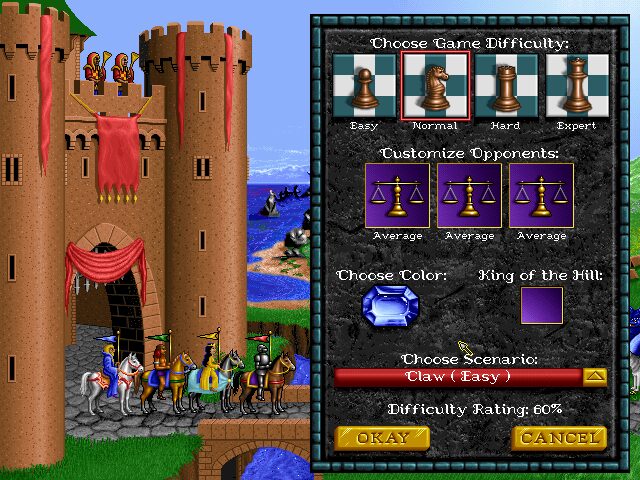
Released in 1995, Heroes of Might and Magic represented a dramatic departure from the traditional CRPG format while maintaining the essential spirit of Van Caneghem's design philosophy. Players controlled heroes who gathered armies and conquered territories in turn-based strategic combat, but the focus remained on exploration, resource gathering, and character development - core elements that had always defined the Might and Magic experience.
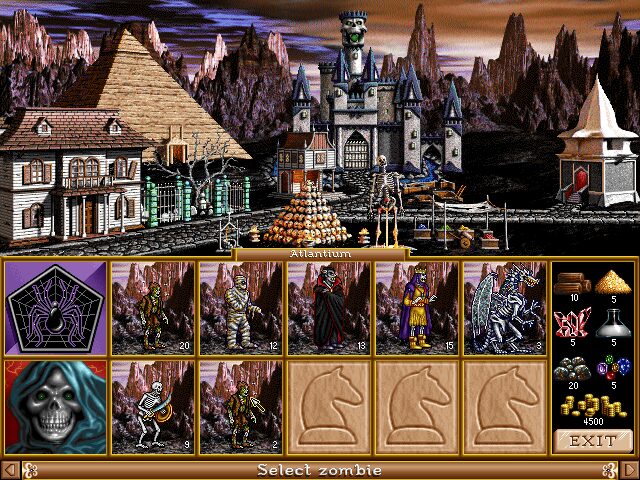
The Heroes series proved even more commercially successful than its CRPG predecessor, spawning numerous sequels such as Heroes of Might and Magic II, and establishing strategy gaming as a viable alternative to traditional role-playing formats. Van Caneghem had successfully reinvented his franchise for a new generation while preserving the generous, open-ended gameplay philosophy that had always defined his work.
King's Bounty: The Strategic Foundation
Before Heroes of Might and Magic achieved massive success, Van Caneghem had actually tested his strategic gaming concepts with King's Bounty (1990). This earlier game combined exploration, army management, and tactical combat in ways that directly prefigured the Heroes series. King's Bounty featured a single hero traveling across continents, recruiting armies and fighting battles to rescue the king's daughter and recover stolen artifacts.

The game's structure - mixing overworld exploration with tactical army combat - established the template that would later make Heroes of Might and Magic a phenomenon. Van Caneghem's decision to revisit and expand these concepts for the Heroes series demonstrated his ability to learn from previous experiments and apply those lessons to create more polished experiences.
Technical Legacy and Innovation
Van Caneghem's technical contributions to game development extended far beyond his programming skills. His early recognition that save-anywhere functionality was essential for player convenience influenced industry standards. His implementation of quest logs and difficulty settings became standard features in subsequent RPGs. His approach to data compression and efficient memory usage provided templates for other developers working within tight technical constraints.
Perhaps most importantly, Van Caneghem demonstrated that technical limitations need not constrain creative ambition. His early games proved that clever design and efficient programming could create experiences that felt vast and complex despite running on severely limited hardware. This philosophy influenced countless independent developers who lacked access to cutting-edge technology but possessed strong creative visions.
The Last Gaming Entrepreneur
Jon Van Caneghem represents the last of a vanishing breed - the bedroom programmer entrepreneur who could single-handedly create complex, commercially successful games. His transition from pre-med student to gaming industry pioneer illustrates both the opportunities available in the early personal computer era and the dedication required to seize those opportunities.
His career demonstrates that lasting success in game development comes not from chasing technological trends or copying competitors, but from understanding what makes games fundamentally enjoyable. Van Caneghem's commitment to generous, open-ended gameplay created experiences that players could explore for hundreds of hours while always discovering something new.
From his early days mapping dungeons on graph paper to revolutionizing strategic gaming with Heroes of Might and Magic, Jon Van Caneghem's career spans the evolution of computer gaming from hobby to industry. His legacy lies not just in the games he created, but in the generous, player-focused design philosophy that continues to inspire developers seeking to create truly memorable gaming experiences.

